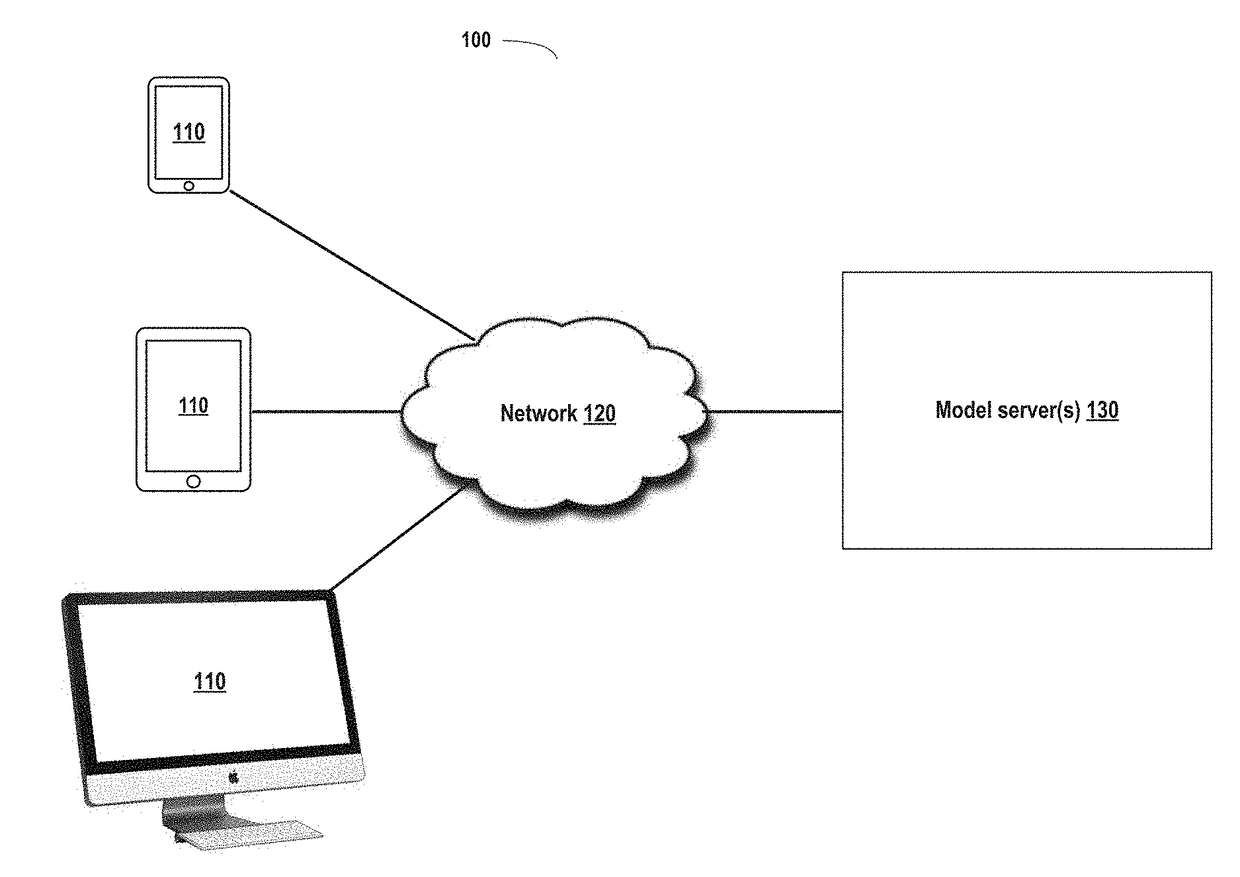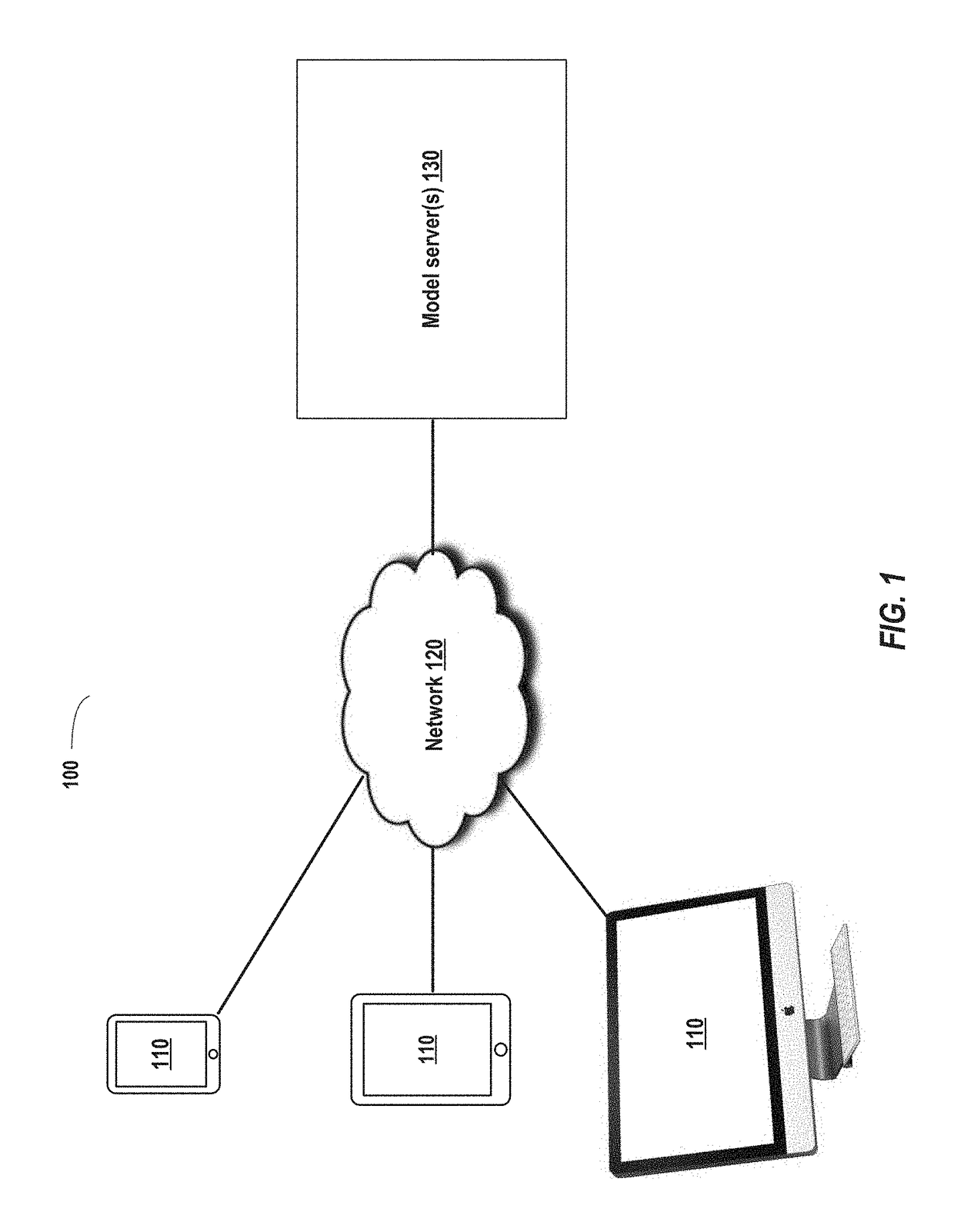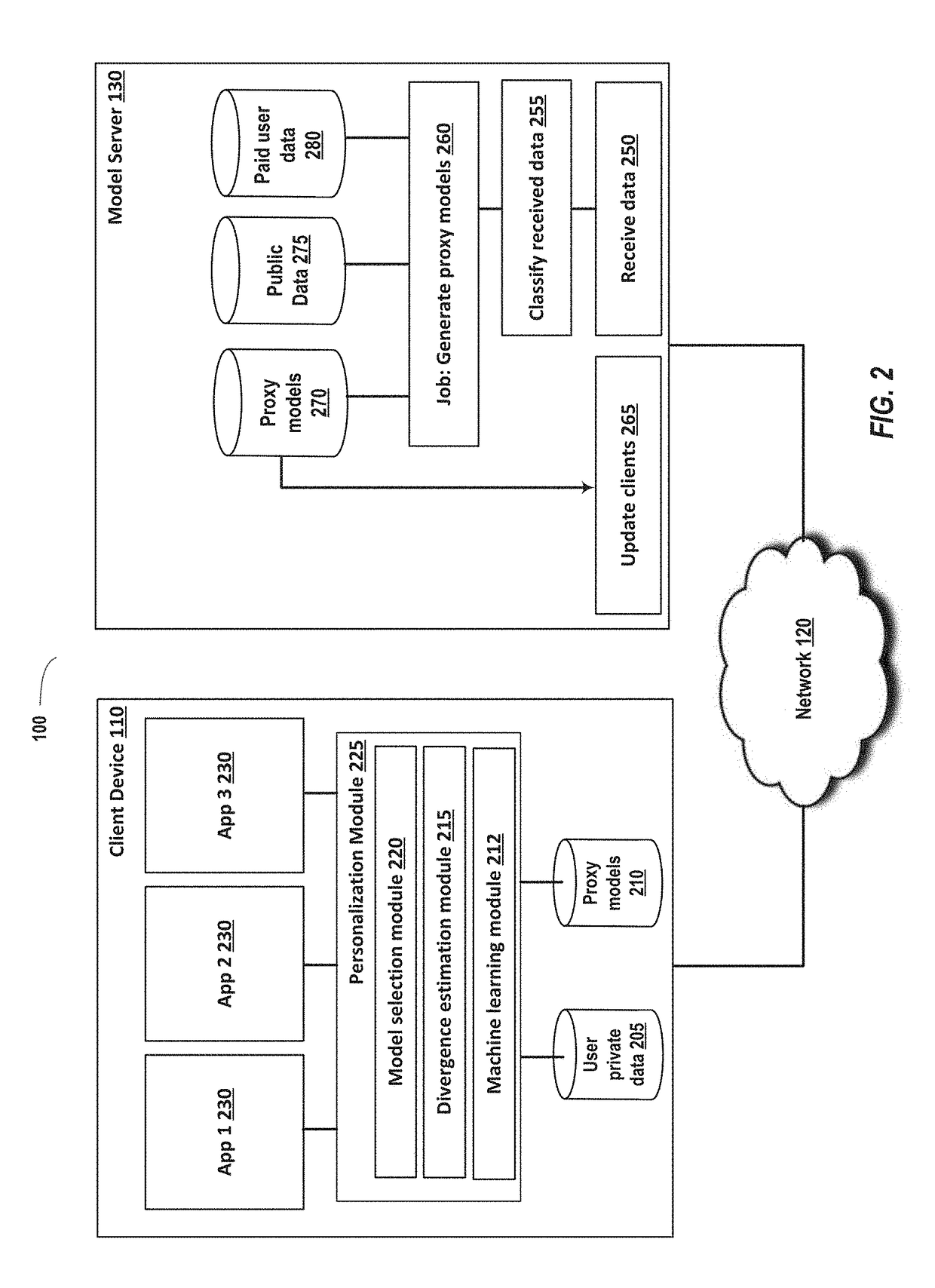Using proxies to enable on-device machine learning
a machine learning and proxy technology, applied in the field of machine learning, can solve the problems of server not knowing which prediction model, intrusive calibration of sensors to a particular human, and inability to know which prediction model, so as to improve the speed and accuracy of machine learning and enhance the user's experien
- Summary
- Abstract
- Description
- Claims
- Application Information
AI Technical Summary
Benefits of technology
Problems solved by technology
Method used
Image
Examples
Embodiment Construction
[0029]In the following detailed description of embodiments, reference is made to the accompanying drawings in which like references indicate similar elements, and in which is shown by way of illustration manners in which specific embodiments may be practiced. These embodiments are described in sufficient detail to enable those skilled in the art to practice the invention, and it is to be understood that other embodiments may be utilized and that logical, mechanical, electrical, functional and other changes may be made without departing from the scope of the present disclosure. The following detailed description is, therefore, not to be taken in a limiting sense, and the scope of the present invention is defined only by the appended claims.
[0030]FIG. 1 illustrates, in block form, an overview of a system for learning a proxy models used by client devices 110 while preserving client privacy, according to some embodiments. A proxy model can be used by one or more applications on a clien...
PUM
 Login to View More
Login to View More Abstract
Description
Claims
Application Information
 Login to View More
Login to View More - R&D
- Intellectual Property
- Life Sciences
- Materials
- Tech Scout
- Unparalleled Data Quality
- Higher Quality Content
- 60% Fewer Hallucinations
Browse by: Latest US Patents, China's latest patents, Technical Efficacy Thesaurus, Application Domain, Technology Topic, Popular Technical Reports.
© 2025 PatSnap. All rights reserved.Legal|Privacy policy|Modern Slavery Act Transparency Statement|Sitemap|About US| Contact US: help@patsnap.com



